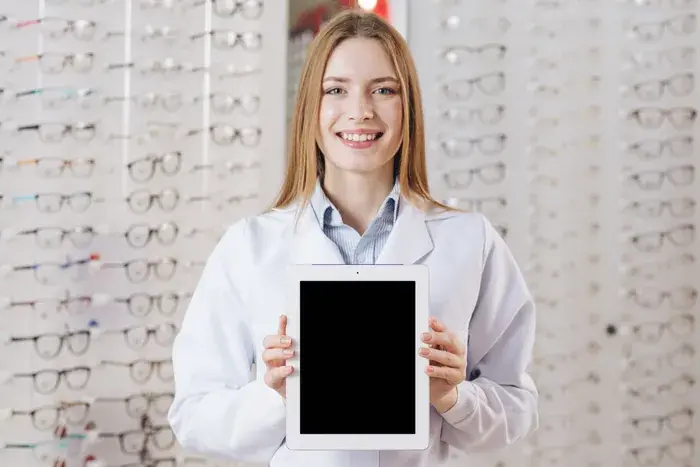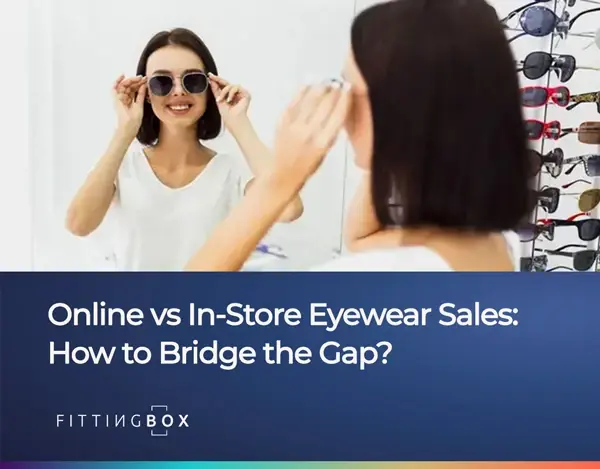.webp)
How to Drive More Traffic In-Store With an Adequate Strategy
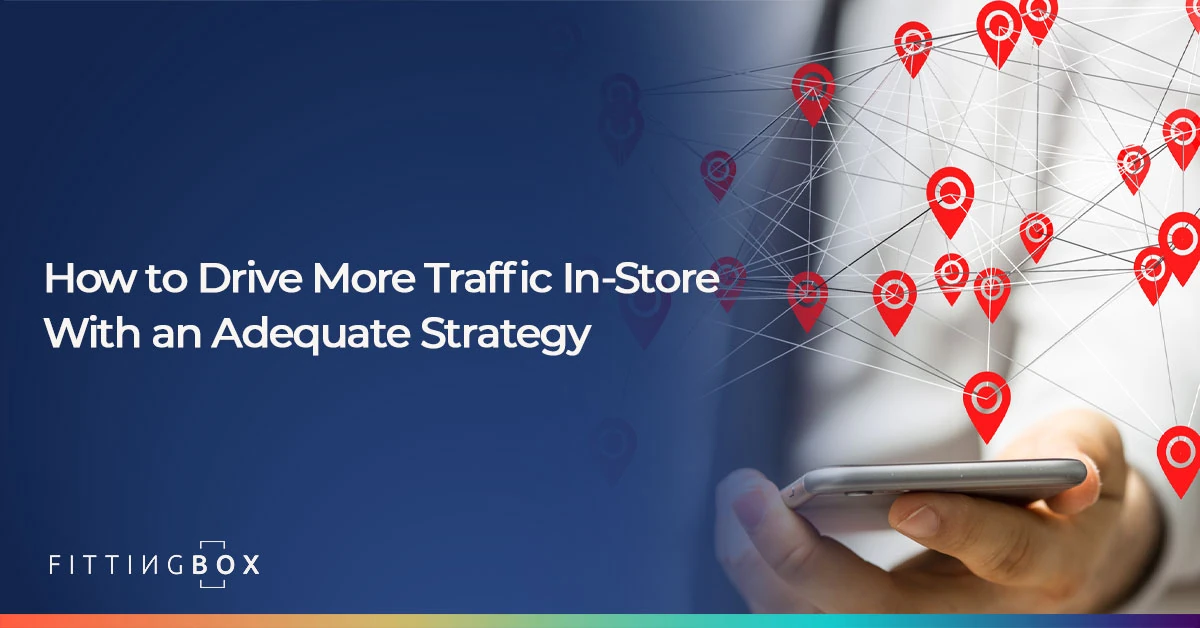 As more and more consumers value shopping from home, fashion retailers have been researching and implementing strategies to get their customers back into their brick-and-mortar establishments. It’s crucial for their bottom lines to provide a positive shopping experience for their customers and when all they have to look at is a virtual image of the products they offer, it doesn’t always move them to purchase.
As more and more consumers value shopping from home, fashion retailers have been researching and implementing strategies to get their customers back into their brick-and-mortar establishments. It’s crucial for their bottom lines to provide a positive shopping experience for their customers and when all they have to look at is a virtual image of the products they offer, it doesn’t always move them to purchase.
The physical feel, the unique fit, and the vast product variety are best experienced in person but most retailers were forced to embrace a digital means of attracting consumers. This forced customers to get that sensory fix after paying for and receiving the products but if they were not satisfied, the burden to return or exchange these products became extensive.
It’s time to get those customers back to browsing the aisles in-store, wrapping themselves in all that the in-person experience has to offer, and adopting both a truly omnichannel approach and a drive-to-store strategy.
What is a Drive-To-Store Strategy?
As the retail industry evolves with changing markets, seasons, and environments, a drive-to-store strategy that combines both in-person and digital game plans is a must-have to get people through the doors. Customers prefer to make informed purchase decisions – especially in times of economic uncertainty.
A drive-to-store strategy encompasses digital marketing campaigns aimed solely at getting more foot traffic into a brick-and-mortar establishment. Whether through your store’s app or even geo-tracking push notifications, using a host of virtual means to attract customers to visit your storefront is an effective tactic for driving sales.
A Harvard Business Review study concluded that with every different channel used by consumers, they spent an average of 4% more on every trip to the brick-and-mortar storefront. When subjected to four or more different channels, they upped their in-store purchases by 9% making a drive-to-store strategy a no-brainer for business growth and sales objective achievement.
Research Online and Purchase Offline
The standard for consumers in the market for eyewear, most research brands and prices online before setting foot in a retail establishment and making their purchase in person. ROPO (research online, purchase offline) is a comprehensive omnichannel approach.
With the flexibility of shopping on a variety of electronic devices – some even on the go and in the palm of your hand, it allows consumers to shop from the comfort of the couch and travel to the store to make the final purchase without having to wait (and pay for) shipping.
Even with the pandemic, consumers are still prone to instant gratification – they’d prefer to pay for their items and receive them at the same time which prompted many online retailers to step up on their reliable shipping methods.
Queue the research online purchase offline strategy.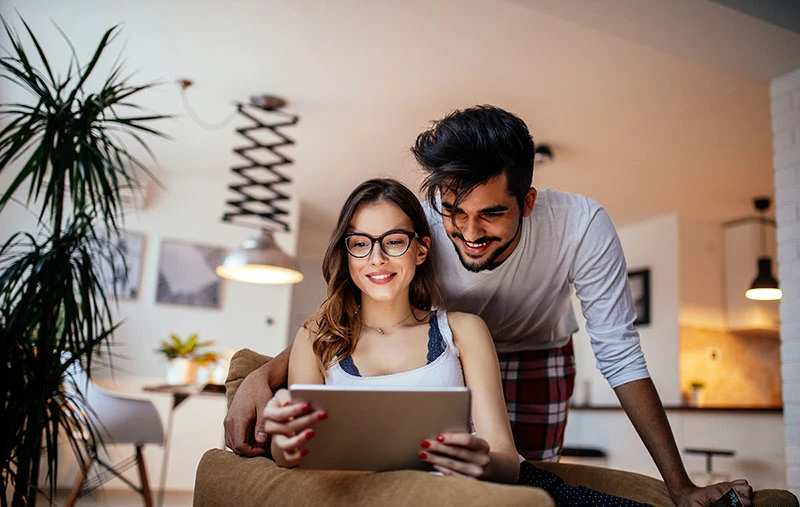
Pay Now, Pick-Up In-Store
To combat those stay-at-home customers and cater to instant gratification preferences, a massive 85% of businesses are implementing (or already have) a pay-now, pick-up in-store plan to grow their in-store customer counts. A whopping 35% of consumers don’t want to wait for shipping to begin enjoying their purchased items and 24% think added shipping costs are too high.
Google and Gortz conducted a study that found that for every one US dollar or Euro spent online, another 0.93 dollars or Euro were generated in offline platforms for the same customer – meaning that when ROPO and omnichannel strategies are integrated into marketing and sales goal efforts, the trend is a boost of 193%.
Citing the same study, when customers were offered a coupon for their online purchase and another for in-store purchases during the same transaction, the post-purchase coupons were used in excess of 50% of the time – boosting sales numbers and net profit significantly.
Curbside Delivery
Many offline retailers offered the best of both worlds during quarantine mandates with online purchases and curbside delivery. However, curbside delivery doesn’t get the necessary foot traffic that retailers need for a truly positive shopping experience and additional related purchases or upsells.
It does increase manpower overhead costs to shop on behalf of the customer and deliver the products to the curb but has shown an increase in popularity by over 60% in the midst of the pandemic. However, for those who offer shipping or delivery, it can save money in that sector. When offering curbside pickup, consider luring your customers into the store with additional valid offers.
Eyeglasses vs. Sunglasses Purchasing Trends
In the eyewear industry, specifically, consumers flock to the idea of virtual try-on apps and interactive social media filters that give them an idea of their new trendy look with a new pair of lenses; however, many customers may prefer to visit in-store to finalize their decision – and their transaction.
While eyewear purchases are still up from where they were pre-pandemic, consumers are trending back to brick-and-mortar eyewear establishments beginning in early 2021. Research shows that while those customers who are looking for prescription eyewear tend to visit an eyewear establishment to make their purchases, those shopping for sunglasses or over-the-counter readers may still prefer to shop online.
The same research surveyed American adults on the reasons why they “window shopped” and researched online prior to their eyewear purchase. Over 50% for all three types (prescription, sunglasses, and OTC readers) researched to check out the various eyewear brand selection and read customer reviews, and slightly less wanted to learn more about various retailers and compare prices. The least favorable reason (32.8% purchasing sunglasses and 24.4% purchasing prescription eyewear) was to make an online purchase (with the exception of OTC readers coming in at 48.7%).
Set Up Online and Get More In-Store Traffic
The research is in and with so many retailers looking to get their marketing and interactive tactics set up online to drive more in-store traffic, it’s time to dive into the opportunities to help your retail establishment grow.
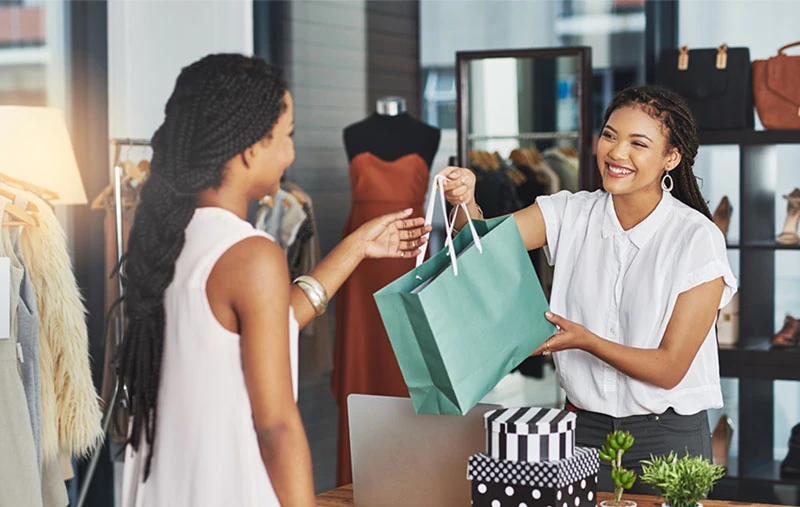
Click and Collect
Implement a click-and-collect strategy that allows customers to buy your product via electronic devices like laptops, tablets, or smartphones, and pick up their order in-store. With 73% of consumers using multiple channels when moving through their purchasing journey, it’s vital to integrate an omnichannel presence – catering to customers both online and in-store.
Virtual Try-On
Before venturing into a retail establishment for eyewear, clothing, or even when purchasing a new family-room furniture set, virtual try-on applications and filters allow consumers to visualize their lives with your products – rendering the value they bring.
With a huge 85% of consumers prioritizing a visual experience to influence their buying decisions, a glasses virtual try-on feature can greatly impact their behavior to research online and purchase in-store.
Interactive Store Locator
Consider incorporating a mobile-friendly, interactive store locator to your app or website to allow consumers to find you easily through GPS, and can be an integral part of your overall brand strategy. Positioning your company as the go-to in the immediate area, it can boost your search engine rankings, and get them in your doors versus the other guys.
When a customer searches for “eyewear near me,” the store locator goes to work and displays your establishment as a viable option. With some store locator services, you can even customize the map to display your brand colors, typography, and even logo.
High-end store locators can even capture current inventory information to ensure product availability for your customers because if they travel in and you don’t have what they need, you no longer align with a smooth omnipresence or customer retention goals.
66% of global shoppers have used their phones to research products or shop while actually walking around in the store – making an in-store product locator another great addition to your omnichannel arsenal. Interactive product maps can sweeten the entire shopping experience for your customers, keep them there, and improve brand loyalty over time.
Social Media Campaigns
With the average global social media user spending approximately 2 ½ hours a day on various platforms like Facebook, Instagram, LinkedIn, Twitter, and Tiktok, there is ample opportunity to reach your customers where they spend their time.
Some social media sites offer paid advertising opportunities to get your customers’ attention while others work in a more organic way – which is a no-cost option for businesses just getting started or who are low on marketing budgets.
With 4.48 billion (2021) people across the world on social media apps and sites, there’s a very high chance you can reach your target audience while making use of these platforms. People tend to be visual in their preferences so consider adding carousels (multiple images to scroll through), videos, and custom filters branded to your company.
When deciding to use paid ads to boost your company’s online presence and entice potential clients, ensure you are testing two versions of your ad with concise copy, motivating images, and a great call to action with a simple A/B testing procedure. Measure the success of both when making the final decision on which to launch to a wider audience.
SMS Marketing Campaigns
SMS, or short message service, campaigns send your subscribers a short text message when there’s an in-store pop-up sale event or a high-value coupon for loyal customers. It has the ability to notify them and entice them to take action for fear of missing out (FOMO). In the US alone, people check their phones 96 times a day – or every 10 minutes.
In fact, 48% of consumers surveyed prefer to receive SMS messages versus other methods of customer notification – far exceeding email open rates.
Consider pairing your SMS campaigns with the power of geo-tracking so that when your customer drives or walks within a pre-specified diameter of your storefront, they receive a text message urging them to drop by for an amazing doorbuster sale, for example.
Email Campaigns
Reaching out to your current and potential customers via targeted email campaigns can bring more traffic to your location as well. Announce an in-store-only sale or offer an exclusive coupon for those who make the trip.
Consider urging loyal and happy customers to leave a review on their recent purchase via email by including a direct link to the review platform. With more and more consumers spending time researching online before making an in-store purchase, you’ll up or maintain your reputation and attract a slew of new customers with a host of positive reviews.
Business Listing
Take time to set up your business listing so that when consumers search for products and services you offer like prescription eyewear, trending children’s toys, or new windshield wipers, your business contact information is readily available. Keep your address, business telephone number, and email up to date on your business listing to avoid consumer confusion.
If the consumers in your corner of the world use Google as their search engine of choice, Google My Business is free to use with a Google account and offers geolocation services, a built-in review platform, your location, and hours of operation for your storefront in their Google Search Results. They also offer analytics for your objective achievement tracking needs.
Without this crucial information, it doesn't matter how much potential clients research your products, they can’t visit you in person to make their purchase if they can’t find you. Of the global population, 90% of people will search and click on businesses on the first page of results, so keeping your business data up to date is vital to driving in-store traffic numbers upward.
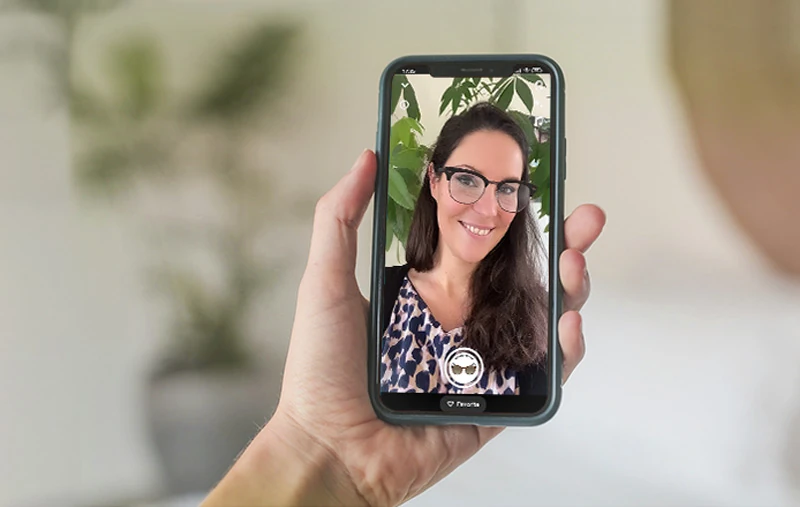
How to Measure the Impact of Your Drive-To-Store Strategy
Predicting how many consumers will visit your store after taking in online marketing efforts is no easy feat, but developing and tracking the metrics of any sales or in-store customer counts can help to delineate whether your efforts are moving you closer to your goals.
Survey
One of the easiest methods of gaining crucial success data is to use an exit survey after a customer visits your website or shopping app. Ask them about their opinions on user experience and if they plan to make an in-store purchase.
Web Analytics
When customers browse your offerings during normal business hours and leave the site and access location information or driving directions, there’s a higher likelihood that their intention is to make an in-person purchase.
Ad Metrics
If making use of social media or Google ads, most platforms include an analytics page that can offer insight into user responses to recently-seen marketing advertisements. If they like what they see and click to see more - including directions and store location but don’t purchase online, they may be headed your way.
Email Marketing Tools
Offering a high-value coupon to be used in-store only via email marketing is another method of tracking success. Gathering data on how many customers used the coupon by code (to differentiate it from other online coupons) demonstrates how well that email marketing campaign is working.
Loyalty Programs
In order to reap the benefits of a brand loyalty program, users are usually asked to register with their contact information and when that loyalty card or barcode is scanned onsite after seeing a specific marketing campaign on the app or website, that data could offer some insight into the campaign's success.
Conclusion
Fickle consumers are yearning for a smooth buying experience that combines the ease of online research with the experience of being in-store. This demands retailers to integrate effective omnichannel and drive-to-store strategies – which are the most effective means of boosting online sales.
Every retailer in every industry wants to boost sales and see an uptick in their bottom line profits but to do that, they must adapt to the ever-changing markets by ramping up their digital presence through strategic email and SMS campaigns alongside business listings and a strong social media presence.
Creating visual and other types of sensory experiences for customers can help get them to step foot inside your establishment to see, touch, and imagine themselves using your product – and feel the need to have it. Virtual try-on apps and social media filters give them a glimpse into the value of your offerings from their homes, later satisfying their urge to have that product in hand by purchasing in-store.
Don’t forget to measure the success of your efforts. Metrics and analytics give marketing teams vital decision-making information on whether to stick with a successful drive-to-store strategy or whether it’s time to pivot on one or two of the integrated tactics.
No matter what you choose to do to increase your foot traffic with a drive-to-store strategy, once inside the storefront, creating a smooth omnichannel buying experience creates brand loyalty and ups sales revenue.
So, what are you waiting for? Get them driving to your eyewear store with these proven strategies.
LET'S TALK
Request a demo, a quote or set up an appointment with one of our sales representatives.
CONTACT USUseful Links
Corporate
© FITTINGBOX 2025 • Terms of use • Privacy & Legal

